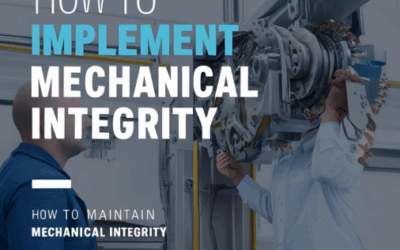Introduction
In the field of engineering, the integration of safety protocols is paramount to ensuring not only the well-being of personnel but also the successful completion of projects. This comprehensive guide aims to equip engineers with the knowledge needed to navigate the complexities of safety regulations, risk management strategies, and continuous improvement processes. By examining regulatory compliance, risk assessment, and training programs, this article will provide insights into establishing a culture of safety that enhances project outcomes and fulfills legal obligations.
Regulatory Compliance
Understanding Relevant Regulations
Engineering projects are subject to a myriad of local, state, and federal regulations designed to protect workers and the environment. The Occupational Safety and Health Administration (OSHA) sets forth guidelines that govern workplace safety standards across various industries. Familiarity with these regulations is crucial, as non-compliance can result in severe penalties, project delays, and reputational damage. Additionally, industry-specific standards, such as those from the American National Standards Institute (ANSI) or the International Organization for Standardization (ISO), provide frameworks for best practices in safety management.
Compliance with these regulations not only safeguards employees but also fosters a culture of accountability and diligence. Engineers must stay abreast of any changes in legislation, as updates can impact project designs and execution methods. Regular training sessions and workshops can facilitate this process, ensuring that all team members are knowledgeable about their responsibilities regarding safety standards.
Impact on Project Planning
Incorporating regulatory compliance into project planning is essential for identifying potential obstacles early in the engineering process. By integrating safety considerations at the initial stages, engineers can proactively address risks and allocate resources more effectively. For example, selecting materials and construction methods that meet regulatory standards can prevent costly rework or redesigns later. This anticipatory approach not only enhances safety but can improve overall project efficiency and timelines.
Furthermore, engaging with regulatory bodies during the planning phase can provide additional insights and support. Early consultations can clear up ambiguities and ensure that the project aligns with safety norms, leading to smoother approvals and inspections. This collaboration can also help in building relationships with stakeholders who are crucial for project success.
Importance of Documentation
Documentation plays a critical role in regulatory compliance, serving as a record of adherence to safety standards. Engineers must maintain detailed records of safety inspections, training sessions, and compliance audits, as these documents may be required during inspections or audits by regulatory agencies. A well-organized documentation system not only facilitates compliance but also promotes transparency and accountability among team members.
Moreover, effective documentation can be an invaluable resource for future projects. By reviewing past compliance efforts and safety incidents, engineers can identify patterns and make informed decisions for upcoming endeavors. This reflective practice supports continuous learning and improvement, ultimately leading to safer engineering environments.
Risk Management Strategies
Identifying Potential Hazards
Identifying potential hazards is a foundational aspect of risk management in engineering. Engineers must conduct thorough assessments to pinpoint risks associated with materials, processes, and environmental conditions. Techniques such as Hazard Identification (HAZID) studies and Job Safety Analysis (JSA) can help in systematically uncovering risks before they manifest into incidents.
Involving a multidisciplinary team during the hazard identification phase can provide a broader perspective on potential risks. By leveraging the expertise of professionals from various fields, engineers can develop a more comprehensive understanding of the project environment and proactively address safety concerns.
Assessing Risk Levels
Once hazards are identified, it is essential to assess their potential impact and likelihood of occurrence. This assessment can be structured using qualitative or quantitative methods, depending on the complexity of the project. Utilizing tools such as Risk Matrices or Failure Mode and Effects Analysis (FMEA) can help engineers prioritize risks and allocate resources efficiently for mitigation efforts.
Effective risk assessment not only informs risk management strategies but also supports decision-making throughout the project lifecycle. By understanding the significance of each identified risk, engineers can develop tailored strategies that address the most pressing concerns first, thereby enhancing overall safety and project viability.
Implementing Mitigation Measures
Implementing mitigation measures is a critical step in safeguarding against identified risks. Strategies may include engineering controls, administrative controls, or personal protective equipment (PPE) to minimize exposure to hazards. For instance, redesigning a process to eliminate a hazardous step can be significantly more effective than relying solely on PPE. This proactive approach not only enhances safety but also improves operational efficiency.
Moreover, regular review and adaptation of mitigation measures are necessary to address new challenges that may arise during the project. Continuous monitoring allows engineers to adjust strategies based on ongoing assessments and feedback, ensuring that safety remains a priority throughout the project lifecycle.
Training and Awareness Programs
Developing Effective Training Modules
Comprehensive training programs are essential for equipping team members with the skills and knowledge required to adhere to safety protocols. Engineers should design training modules that address specific safety concerns related to their projects while incorporating general safety principles. Interactive training methods, such as simulations and workshops, can enhance engagement and retention, ensuring that employees are well-prepared to handle potential risks.
Additionally, training should be tailored to varying levels of experience within the team. New employees may require foundational training, while seasoned professionals may benefit from advanced sessions focusing on specialized safety issues. By addressing the diverse needs of team members, engineers can cultivate a culture of safety that permeates throughout the organization.
Engaging with Team Members
Engagement during training sessions is crucial for fostering a culture of safety. Encouraging open dialogue and feedback allows team members to share their insights and experiences, leading to a more nuanced understanding of safety challenges. Furthermore, fostering a sense of ownership over safety practices can motivate employees to prioritize safety in their day-to-day activities.
Incorporating gamification elements into training can also enhance engagement. By introducing competitions or challenges, engineers can make safety training more enjoyable and memorable, further reinforcing the importance of safety protocols.
Evaluating Training Effectiveness
Regularly evaluating the effectiveness of training programs is essential for continuous improvement. Engineers should utilize metrics such as incident rates, employee feedback, and performance assessments to gauge the success of their training initiatives. This data can inform future training sessions, ensuring that they remain relevant and impactful.
Moreover, creating a culture of accountability where team members are encouraged to report unsafe practices without fear of repercussions can help identify areas where training may be lacking. By fostering such an environment, engineers can continuously refine their safety training programs to meet evolving needs.
Continuous Improvement Processes
Feedback Mechanisms
Implementing feedback mechanisms is vital for ongoing safety improvements. Engineers should establish channels through which team members can report safety concerns, suggest improvements, and provide feedback on safety practices. Regular safety meetings can serve as a platform for open discussions, allowing employees to voice their opinions and contribute to the safety culture.
Furthermore, utilizing technology such as safety management software can streamline the feedback process, enabling real-time reporting and tracking of safety issues. This innovation not only enhances communication but also allows for swift action in addressing concerns.
Regular Safety Audits
Conducting regular safety audits is a cornerstone of continuous improvement in engineering safety practices. These audits should evaluate compliance with safety protocols, assess the effectiveness of training programs, and identify areas for potential enhancement. By systematically reviewing safety practices, engineers can ensure that they remain aligned with current regulations and industry best practices.
Additionally, involving external auditors can provide an unbiased perspective on safety practices. External reviews can help identify blind spots that internal teams may overlook, enabling engineers to implement necessary changes and improvements.
Adapting to New Challenges
The engineering landscape is constantly evolving, presenting new challenges that necessitate adaptability in safety practices. Engineers must remain vigilant and responsive to changes in technology, regulations, and project environments. By staying informed about emerging trends and innovations, engineers can proactively adapt their safety protocols and training programs.
Moreover, fostering a culture of innovation within the team can encourage creative solutions to emerging safety challenges. By empowering team members to brainstorm and propose new safety practices, engineers can cultivate an environment conducive to continuous improvement.
Case Studies and Best Practices
Successful Integration Examples
Examining successful integration of safety protocols in engineering projects can provide valuable insights for future endeavors. For instance, a major construction company implemented a robust safety management system that included comprehensive training, regular audits, and active employee engagement. As a result, the company experienced a 30% reduction in workplace incidents over a three-year period, demonstrating the effectiveness of a proactive safety culture.
Another example is found in the aerospace industry, where stringent safety protocols are crucial due to the high stakes involved. By adopting a systematic approach to risk assessment and management, aerospace engineers have significantly reduced accidents and incidents, showcasing the importance of integrating safety into every phase of project development.
Lessons Learned from Failures
Learning from past failures is essential for improving safety protocols. An infamous case in the engineering field is the collapse of the Tacoma Narrows Bridge, which highlighted the consequences of inadequate risk assessment and safety measures. This event served as a wake-up call for engineers, leading to the establishment of more rigorous safety protocols and engineering principles that prioritize safety above all else.
By analyzing such failures, engineers can identify pitfalls and avoid repeating the same mistakes. Establishing a culture that values transparency and encourages discussion around incidents—both successful and unsuccessful—can foster continuous learning and prevent future mishaps.
Benchmarking Against Industry Standards
Benchmarking safety practices against industry standards can provide engineers with a roadmap for improvement. By evaluating their safety protocols against those of industry leaders, engineers can identify gaps and opportunities for enhancement. This process not only drives accountability but also helps teams stay competitive by adopting best practices that are proven to be effective.
Industry associations often publish safety reports and guidelines that can serve as valuable resources for engineers seeking to improve their safety practices. Engaging with these associations provides additional opportunities for learning and collaboration, ultimately contributing to superior safety outcomes in engineering projects.
Conclusion
Integrating safety protocols into engineering projects is not merely a regulatory requirement; it is a fundamental responsibility that affects the well-being of all team members and the success of projects. By understanding regulatory compliance, implementing effective risk management strategies, fostering comprehensive training programs, and embracing continuous improvement processes, engineers can create a robust culture of safety.
Leveraging case studies and best practices further enhances this culture, providing a framework through which engineers can learn and adapt. As the engineering landscape continues to evolve, maintaining a commitment to safety will be the cornerstone of successful and sustainable engineering practices.
FAQs
What are the key safety regulations engineers should be aware of?
Engineers should be familiar with OSHA guidelines, ANSI standards, and ISO safety management systems. Understanding these regulations is crucial for compliance and ensuring a safe working environment.
How can engineers effectively identify potential hazards?
Engineers can utilize techniques such as HAZID studies and Job Safety Analysis (JSA) to systematically identify potential hazards associated with their projects. Including a multidisciplinary team can further enhance this process.
What role does training play in safety management?
Training is essential for equipping employees with the necessary skills and knowledge to adhere to safety protocols. Comprehensive and engaging training programs can foster a culture of safety within the organization.
How often should safety audits be conducted?
Safety audits should be conducted regularly, with the frequency depending on the nature and scale of the project. Annual audits are common, but more frequent assessments may be necessary for high-risk environments.
What are some best practices for continuous improvement in safety protocols?
Implementing feedback mechanisms, conducting regular safety audits, and encouraging employee engagement are key best practices for continuous improvement. Adapting to new challenges and leveraging industry standards can further enhance safety protocols.


